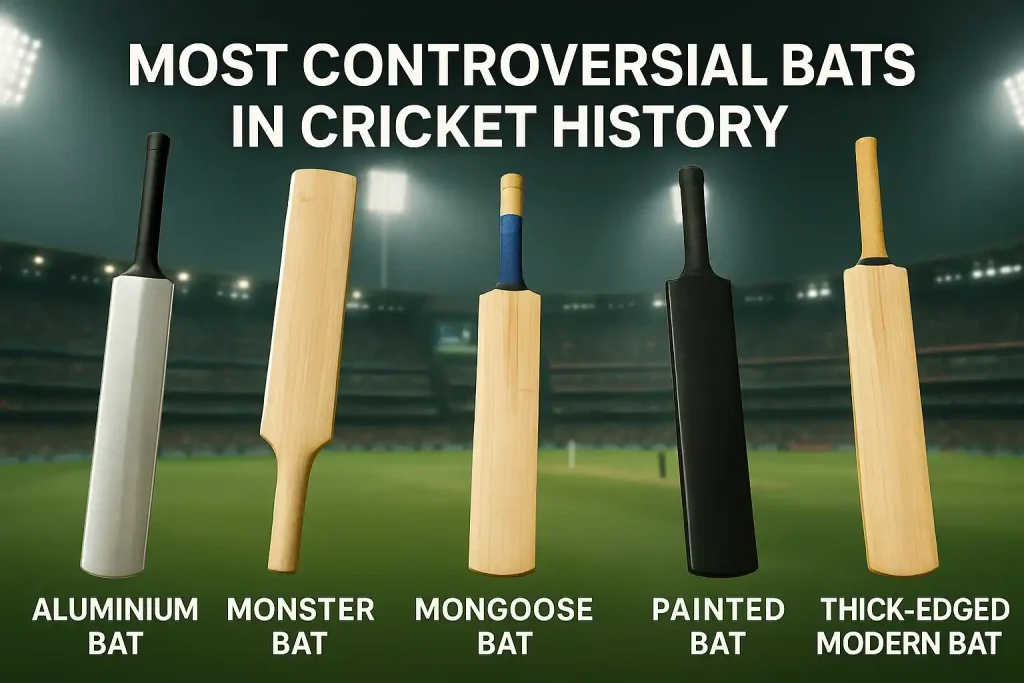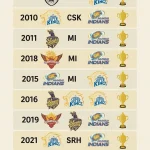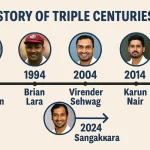
Cricket exemplifies the adherence to traditional customs and frameworks common in games with a rich history. Every now and again, it gets a shot of uninhibited innovation. An example would be the Mongoose bat. Its unconventional shape captured instant interest because it aimed to destroy the customary order of batting. Still, its controversial nature sparked new discussion: has the Mongoose bat been banned? For the last ten years, this speculation, coupled with whispers and other fables, has followed the sport, often hidden behind a few explosive innings.
What Exactly Is the Mongoose Bat?
Designed by Marcus Codrington Fernandez and launched by Mongoose Sports, this bat was not built to please purists. It featured a shortened blade and an extra-long handle, almost like a cricketing mallet. This redistribution of weight gave it 33% more power in the hitting zone, especially beneficial in Twenty20 formats. But the catch? It left very little room for error — especially in defense.
It made headlines in 2010 when Matthew Hayden wielded it for Chennai Super Kings in the IPL. The sight of him launching balls with what looked like a child’s toy fascinated fans. He struck 93 off 43 balls with it in one game — and the Mongoose instantly became both legend and lightning rod.
Mongoose Bat Ban: Fact or Fiction
To get directly to the point, the Mongoose bat is not prohibited by the ICC as of now. Its use is unrestricted as long as it complies with the size and edge thickness specifications laid out by the MCC Laws of Cricket as of 2017. The misunderstanding arose from its absence in elite-level cricket, not a formal absence of its use.
There was no professional migration caused by an outright ban; however, the features of the bat made it impossible to compete. It was a full commitment to extreme attacking golf. Even against pace, the slightest miscalculation meant leaving the wicket wide open. For the lower divisions or select roles in T20, it can still be beneficial.
Table 1: Mongoose Bat vs Traditional Bat — Key Differences
| Feature | Traditional Bat | Mongoose Bat |
| Blade Length | Full (approx. 22 inches) | 33% shorter |
| Handle Length | Standard | 43% longer |
| Sweet Spot Area | Broad | Concentrated lower down |
| Defensive Play | Comfortable | High risk |
| Ideal Format | All formats | T20 or short-format leagues |
The biggest clue to the Mongoose’s limited adoption lies in that last row. T20 allows innovation — but even there, pros preferred consistency over raw power alone.
Why Did the Mongoose Fade Away?
After its explosive debut, especially through Hayden, no other international star truly adopted it. The bat was tried, sure — by domestic players, club cricketers, and even marketed heavily in Asian countries — but it never found lasting traction. Why? Because elite cricketers value balance more than novelty.
Defending, glancing, rotating strike — all became harder with the Mongoose. Its shorter blade gave little forgiveness. While it delivered sixes, it also demanded a hitting style that wasn’t sustainable in varied conditions — especially on spicy pitches with bounce or swing. And as Hayden retired, so did the hype.
Table 2: Timeline of the Mongoose Bat’s Rise and Retreat
| Year | Event | Impact |
| 2009 | Mongoose bat launched | Gained curiosity in UK leagues |
| 2010 | Matthew Hayden uses it in IPL for CSK | Massive spike in visibility |
| 2011 | ICC reaffirms legality under MCC rules | No ban, but scrutiny increases |
| 2012 | Decrease in appearances in pro matches | Questions over practicality emerge |
| 2017 | MCC updates bat dimension rules | Mongoose remains within legal size |
| 2020 | Revival in amateur circuits during T10 boom | Popularity rises in niche formats |
The bat never vanished completely. In T10 leagues or YouTube challenges, it pops up as a novelty — even nostalgia. But in modern international cricket? It’s practically extinct.
Cultural Impact: The Aftermath is More Than a Gimmick
The Mongoose bat is a piece of cricketing paraphernalia that stirred a lot of controversy and conversation in its short-lived existence. It brought dares into the world of cricket to evoke a different, intriguing form of thinking, to spice up the already fast-paced format. Mongoose challenged the limits of tradition.
The disruption created by the Mongoose bat left a mark on cricket gear manufacturing, too. Bats were later produced with thicker edges and bigger sweet spots. The Mongoose may not have an impressive record to boast about, but it most certainly earned the title of disruption.
Is the Mongoose bat restricted from use? Not exactly, but those individuals it aimed to inspire and empower have, in fact, ‘benched’ it. The Mongoose bat gave us a spark, a highlight reel, and broke many design rules to make a point in doing so.

Meet Arjun Kushaan, a passionate cricket analyst at The Cricket24x7. From street matches in his childhood to competitive college tournaments, cricket has always been a central part of Arjun’s life. With a strong background in data analysis and a natural affinity for numbers, he brings a fresh, analytical lens to the game. At The Cricket24x7, Arjun blends his deep love for cricket with his data-driven approach to deliver detailed insights and well-rounded coverage for fans of the sport.






